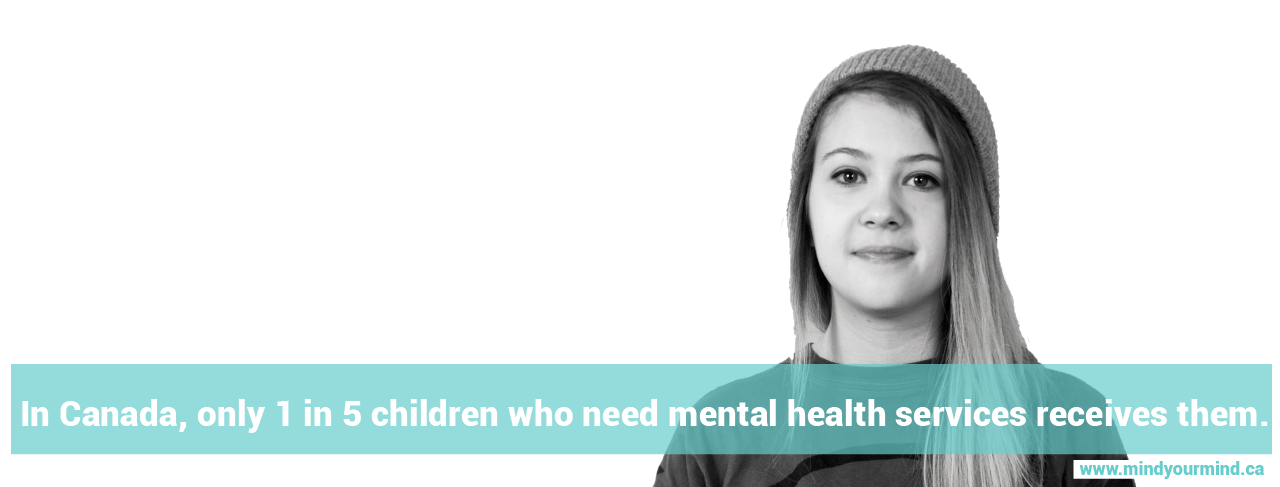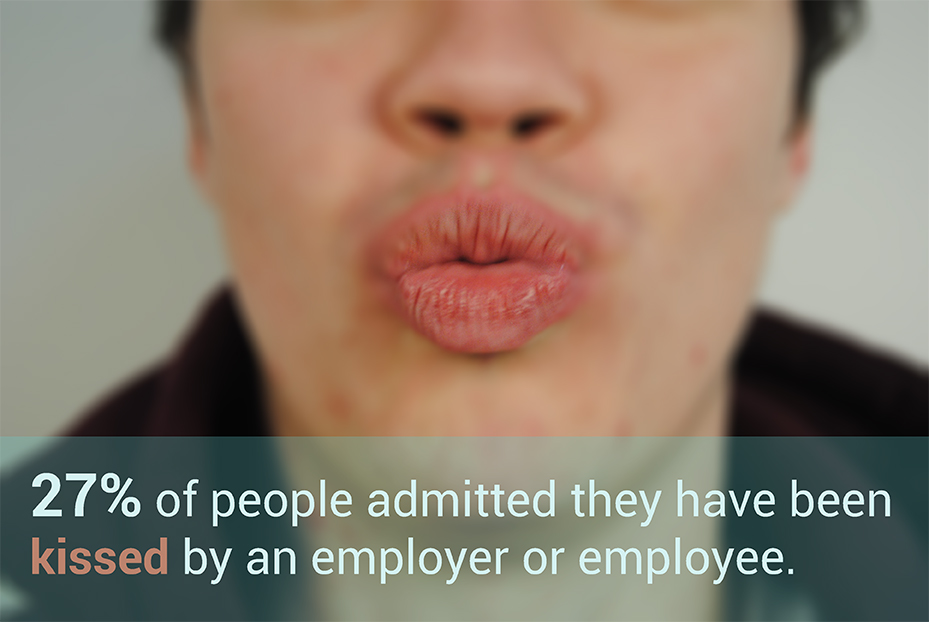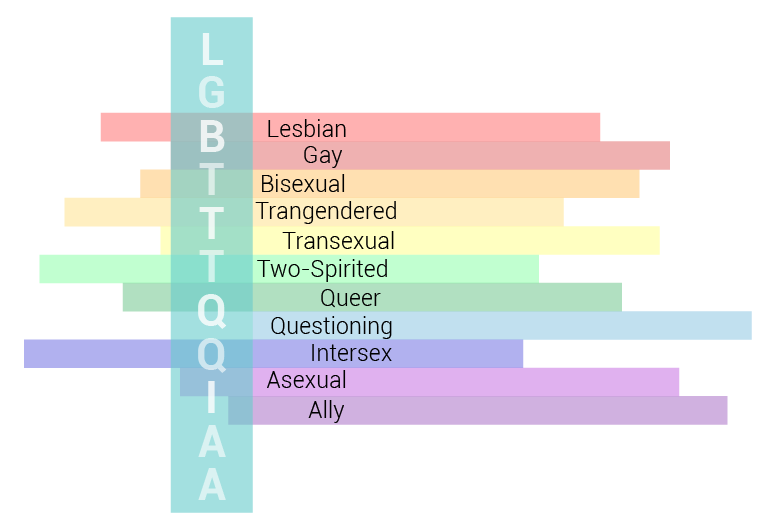What are the chances?
#Whatarethechances your gender, race, income, or a mental illness will limit your opportunities as a Gen Y? Perhaps the way that your race or culture is portrayed in the mainstream media will impact the way a potential friend looks at you. What about your gender, sexual orientation or identity? Maybe the amount of money that your family makes will limit what sports you play or where you can go to school. And what about a mental illness? Will you be stigmatized for circumstances outside of your control? Society’s perceptions and expectations of how certain people should act often override reality. The Millennials are collectively a group of 80 Million 18-29 year olds, but their circumstances are unique. It might be 2014, but there are many factors that divide Gen Y. We’re setting out to discover #whatarethechances?
Mental Health
#Whatarethechances a mental illness will limit your opportunities? According to the Canadian Mental Health Association, 20 percent of Canadians will personally experience a mental illness in their lifetime—affecting people of all ages, cultures, and educational and income levels. Mental illness in youth is particularly significant, as most disorders surface around the time of adolescence.
In this section we will explore how mental illness can affect your ability to function in a school environment or get a job, and how income can limit opportunities to access treatment and resources. And perhaps most importantly how other people’s negative perceptions of mental illness are the biggest obstacle to overcome.
Depression, Suicide and Anxiety
Did you know that suicide is one of the leading causes of death in both men and women from adolescence to middle age in Canada? A new CAMH study says that more than 230,000 Ontario adults considered suicide in 2013. This amounts to 2.3 percent of Ontario’s adult population. This alarming statistic is just one of many shocking facts regarding mental illness among youth in the Canadian community. Sadly, suicide accounts for 24% of all deaths among 15-24 year olds. Those experiencing depression have reported that their work, home life and relationships have all suffered as a result from the illness.
Or what about the most common mental health issue? According to Health Canada, one in ten Canadians is affected by anxiety disorder. This disorder is not to be confused with your everyday anxious feelings; people who suffer from anxiety disorders experience long periods of extreme feelings of fear or concern that is out of proportion from the norm. The illness can actually interpret valid or imagined events as much more uncertain or precarious than they truthfully are. Living a life of stress and fear can often affect an individual’s workplace and personal relationships—as well as put a lot more pressure on social interaction and intimacy.
Anxiety is also linked to depression, eating disorders and substance abuse. And while anxiety disorder is treatable with medication, therapy and meditation—the illness often remains untreated amongst youth, as it is often misinterpreted and swept under the rug.
Anxiety is also common amongst people with bipolar disorder.
Bipolar Disorder
In life, we will all experience mood swings at some point or another. Sometimes you may feel sad, other times extremely happy. These feelings that you experience are typically manageable during everyday life. But what would happen if these mood swings heightened, and amplified. How would this affect your life?
Bipolar disorder is a mood condition that triggers dramatic changes in mood,energy and behaviour. The mind will experience alternating “highs” (or mania) and incredible “lows” (or depression). The Canadian Mental Health Association says one percent of Canadians aged 15 years and over reported symptoms that met the criteria for a bipolar disorder in the previous 12 months. Possessed by extreme emotions, changing drastically into dramatic episodes, unable to control the extreme highs and lows that strike even the darkest and most secret depths of the mind: this is what it’s like to live with bipolar disorder.
Most people tend to see the emotions within the disorder as black and white, what they regret to notice is the spectrum of emotion within the illness. Though the two main episodes may be an extreme high and extreme low, the truth is, there is a rainbow of colour of emotions.
So what is it like living with bipolar disorder? Here is a rare glimpse, a first-hand account from someone who lives with the illness daily.
The Thinglink below chronicles all of Ryan’s tattoos, which he sees as a journey through his bipolar disorder.
The Autism Spectrum
Making new friends is already awkward enough, it can be nerve-racking walking into a room full of strangers and attempting to build friendships with people you hardly know. But imagine the feeling of coming into a new environment and not knowing how to relate with anyone. Social interaction is one of the many challenges linked with having autism. According to Autism Services Inc, autism now affects 1 in 68 children.
Autism is medically characterized as an impaired ability to engage in social relationships—this can make it quite difficult for those living with the disorder to develop and maintain friendships. Other characteristics include trouble communicating, repetitive behaviours and unusual, or severely limited interests.
Below is a Wordle, made by our own Alex Lai. Alex was diagnosed with Asperger’s as a young child and has thrived as a member of our program. This graphic is made up of words Alex used to describe what it is really like living with Aspergers.
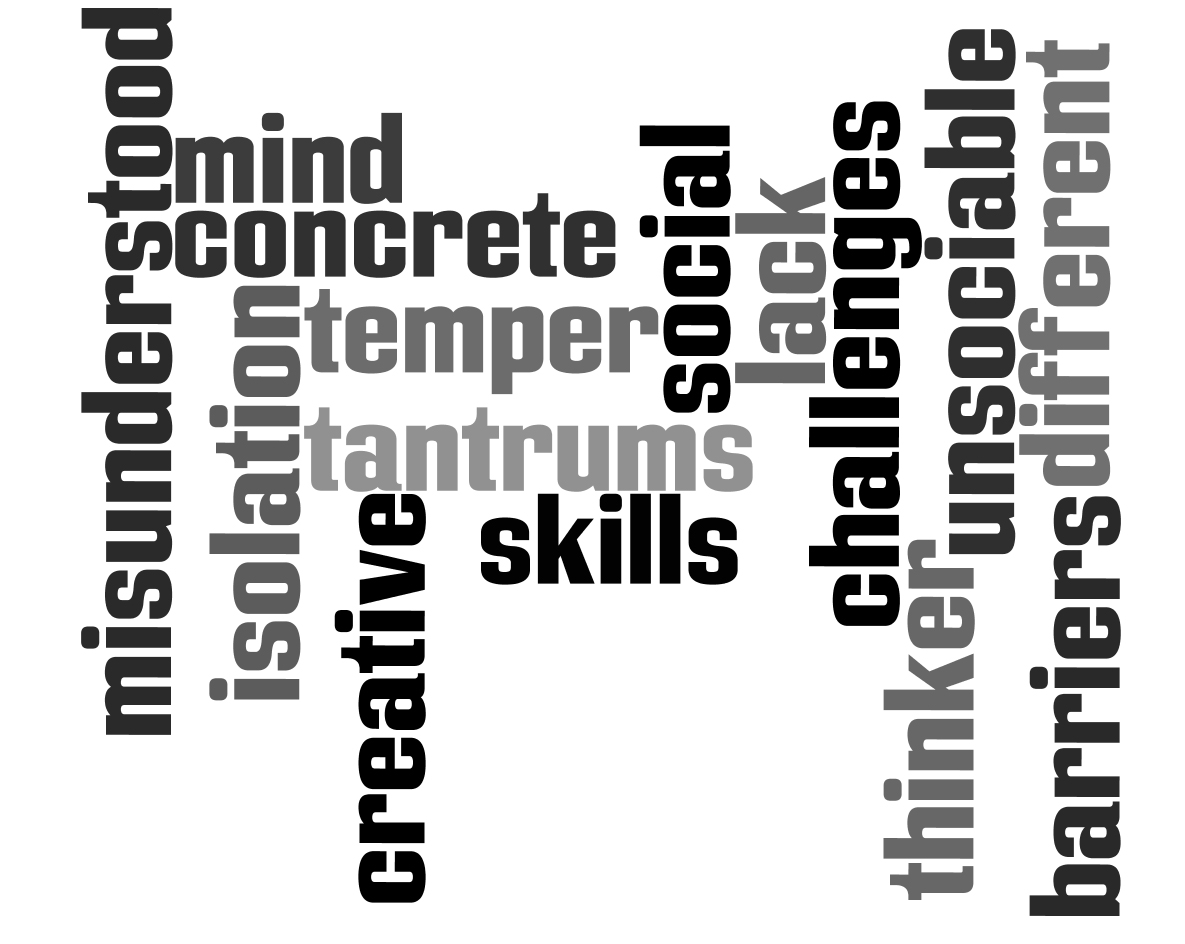
And to provide further insight, watch Alex interview Ian MacIntyre, a student with high functioning autism. Communication doesn’t always come easy for people with autism, so we ask you to be patient, so Alex and Ian can prove that despite factors outside of their control, they are still capable of sharing valuable information.
Income
What would you pay for a second chance? Well, for many young adults from Generation Y, they can’t afford a first one. The availability of quality education and athletic opportunities is directly tied to the amount of money they have access to. In Canada, there exists a massive opportunity gap between higher and lower income households, putting tremendous financial strain on some families who wish to fulfill their child’s dream of playing a sport or going to school for something that they love. In this section, we explore how opportunities are sometimes only available to those who can afford them.
Pay to Play
Organized sports can be a great experience for any child, at any age. Their health, both physical and mental, stands to benefit from an increased activity level, and sports help them develop essential skills such as leadership and teamwork. But parental education levels are directly linked to the likelihood of a household being able to put their children through organized sport. Kids who have parents with a professional university degree are more likely to play sports (60%) than compared to those with parents who only have a high school diploma (42%).
Putting your child through organized sports can be a sacrifice. A study by The Canadian Scholarship Trust shows that 39 percent of hockey parents borrow money to keep their kids on the ice. By comparison, minor soccer leagues can cost as little as $50 to register, with minimal equipment costs. The average cost to put a child through soccer is $250, much lower than the $1,200 cost of hockey. But #whatarethechances that a family with a lower annual income can afford even the most economical of sporting options? According to a Statistics Canada report, children in lower income households tend to have lower participation rates for organized sports than their higher income counterparts.

You Can Learn if You’ve Earned
Your level of education will have a significant impact on what your earning potential is. Statistics Canada says that high income Canadians tend to be highly educated, and university graduates will earn an average of 32% more annually than those with a college diploma or certificate, and 53% more than someone without any post secondary education at all. So #whatarethechances that all millennials will have access to an education that will bring them economic prosperity? In Canada, the cost of education for Canadians is lower than the United States and United Kingdom. However, Canada’s average undergrad tuition is $5,366, and $5,599 for postgrad programs, per semester. Here in Ontario, the averages skyrocket to $6,640 and $7,578, respectively. While the rest of the country might pay lower tuition costs, the additional costs of living away from home or out of province can reach upwards of $6,000 per year.
The Ivy League
Ontario’s high tuition prices can be attributed to the various high-ranking universities within the province. Most notably, the University of Toronto, ranked as the 20th best university in the world by QS world university rankings, carries a price tag of over $10,000 per year. However, two years after graduation, 90% of U of T grads are employed in their desired fields, and 100% of U of T medical school graduates are employed after leaving the institution. A new OSAP distance grant provides students with a measly $500 per term if a student is 80 kilometers away from home. But just recently, the Government of Ontario unveiled plans to increase the amount of financial aid available to students, while simultaneously introducing new methods of repayment to help students pay down their debts. However, without adequate financial resources, Generation Y’s educational opportunities are certainly restricted.
No Guarantees
Even if Millennials are afforded the opportunity to go to the post secondary institution of their choice, #whatarethechances they’ll be able to earn a living after graduation? Your field of study is an important factor that impacts your future earning potential. According to Employment and Social Development Canada, receiving a BA or Masters degree in health care, engineering, business or law can lead to jobs with higher wages than the same level of degree in general arts or history. Additionally, your field of study can also influence employability, as some fields of study will take you directly onto a career path (such as dentistry or veterinarian degrees), whereas other degrees (such as liberal arts) don’t point you in any particular direction. Opportunities are even harder to come by if you’re disabled. Another report from Statistics Canada shows that only 49% of working age Canadians with a mental or physical disability have a job—but education has a huge impact. Employment rates for disabled individuals climb to 83% when they possess a university degree.
Race
#Whatarethechances you could be discriminated against in your lifetime? Discrimination is an unfortunate reality that people of any background may have to face in society today. Even in Canada’s diverse culture, people of all races are bound to meet somebody sooner or later that holds prejudice against them.
Racism doesn’t boil down to one person hating another for the colour of his or her skin. It’s more a matter of social dissonance as a by-product of cultural differences between people of different backgrounds. In a country harbouring people of so many different cultures, the statistics show racism is unfortunately abundant.
Sadly, racial discrimination has worked its way not only into Canadian culture, but also into the Canadian workplace. A YWCA study shows that people of visible minorities can earn less money than people of majority based on race alone. Although it has recently been suspended, the controversial practice of carding by law officers has shown a targeting of minorities.
Racial Profiling
Sometimes individuals are singled out simply because of the colour of their skin. In Toronto, there has been a large debate over carding. A 208 card is a document police fill out when stopping someone for random investigation. The card profiles personal information, as well as a physical description of the suspect and whether or not the suspect has any known gang affiliations.
After much outrage over this practice, Toronto Police announced as of January they would be suspending carding. However, until recently, Toronto police officers were reviewed at the end of each month to see how many cards they filled out. Critics say this system was flawed, as it caused a lot of unnecessary stoppages and scrutiny of innocent citizens. The Toronto Police did an analysis of data collected over six years on contact cards. The analysis found that in 2008 four out of five people who were carded did not show up in a criminal database. Another wrinkle was thrown into the system by the process’s receipts, which include space for the carded individual to complain about the process. MetroNews.ca recently shared a survey that showed the majority of people stopped and carded in the Jane and Finch area felt that they were targeted by police.
Below, Scarborough resident Jay Carter tells his story of repeated encounters with Toronto police.
Recently, tension between police and minorities has been in the spotlight because of several controversial judicial decisions in the United Sates. The events in Ferguson and New York are causing backlash for police officers as the public reacts to the killing of two black men by police. “My interactions with people are based on how they interact with me, not the colour of their skin” said an Ottawa Police officer (who asked to remain anonymous) that we talked to about racial profiling, and the stereotyping of police officers by citizens. The full transcript is available here.
In the recently released Pacer Report, police say “the vision of the Toronto Police Service is to be a world leader in a bias-free police service delivery to make Toronto one of the safest urban centers in the world”.
Amongst the most unfortunate racial issues in Canadian society are hate crimes. A hate crime is any crime fueled by racial, sexual, religious, or other prejudice. According to Stats Canada, blacks are most often on the receiving end of the most hate crimes, being targeted for 42% of Canada’s total.
So why are blacks so commonly targeted?
A common misconception is that blacks are responsible for more crimes than whites, but according to The Toronto Star, as shown in the graphic below, whites are charged roughly four times more often.
Media Portrayal/Stereotypes
The media tends to portray certain races in certain ways that may be considered less than ideal. As time progresses, this is becoming less of an issue, but it was only a few decades ago that some of our most beloved TV shows were portraying minorities with stereotypes and passing it off as acceptable.
Nowadays, the media is starting to break the thresholds of the past. Interracial families are now an accepted part of Canadian and American television – specifically, in this commercial for Cheerios.
Whether it’s explicit or subliminal, race is often still portrayed in an unjust way. Here are some Sheridan students with their takes on the issue.
Despite our diverse culture, according to a study by the University of Toronto, Canadian media still tend to represent whites in a positive light more often than any other race. Education is the strongest weapon against racial discrimination. We just need to make sure we all do our parts as time goes on. It all begins here with Generation Y.
Gender
The F Word
The F word that we’re talking about is not what you’re thinking of, but it also comes with a lot of negative connotation. We’re talking about feminism. In the dictionary, feminism is defined as “the belief that men and women should have equal rights and opportunities.” In the early 1900s, women fought for equal rights, such as the right to vote, but feminism has been around since the late 1700s when The Vindication of the Rights of Woman was created. This major work of feminist philosophy was written by Mary Wollstonecraft, an 18th century British feminist, because she believed that women deserved the right to an education. Even today, the fight for education continues. According to the United Nations (UN), more than 35 million girls do not go to school because they are not allowed to or their family cannot afford it. In 2012, 2014 Nobel Peace Prize winner Malala Yousafzai was shot in the head by a Taliban soldier for demanding girls be allowed the right to education.
The ideology behind feminism brings one main idea to the table, and one idea only- equal rights for all. Even today in 2014, women are subject to lost opportunities because of their gender. Although we live in a country where equal rights are thought to be pretty common, in many countries, women are not perceived as equals. In recent headlines, Turkish president Recep Tayyip Erdoğan declared that women are not equal to men. Another major headline that has been in the news since April is the #BringBackOurGirls campaign. On April 14th 2014, over 200 Nigerian schoolgirls were abducted by Islamic extremists. And now Gen Y is picking up the fight for equality.
You can now find feminist clubs in Toronto high schools and high profile Gen Ys are taking up the cause.
Emma Watson is a British actor and is best known as Hermione Granger in the Harry Potter franchise. However, she was recently named the UN Women Goodwill Ambassador. At a young age, Emma was exposed to gender inequality, which brought her to the conclusion that men and women should be equal. The video below is Emma’s UN speech for the HeForShe campaign.
We Aren’t Equal
Stats Canada conducted a study that explored the employment and unemployment rates between men and women. This study shows how much of a difference there is between men and women’s annual earnings. Women who work full time earn about 71 cents for every dollar earned by men. Ontario has the highest female unemployment rate standing at 7.3%. Overall women have a lower rate of employment in comparison to men in Canada. Check out the graphic below to see how those stats get worse when men and women have children.
The story of now infamous former CBC host Jian Ghomeshi has everyone talking about sexual assault and how women are treated when they come forward and make a complaint or accusation. There have also been shocking new stats released about sexual harassment in the workplace, as identified in the graphic below.
We spoke with Kathleen Cummins, a PhD in Gender Studies, about sexual harassment and sexual assault. She also explained how Taylor Swift is fighting the sexualized stereotype of women in media.
LGBTQ
A bigger question for Gen Y might be what is gender anymore, and how do you identify yourself sexually?
Although the many definitions are recognized, there is still the challenge of being accepted, as the visualization below shows.
We chatted with Kabir Rathaur-Bageria on Facebook about what it is like to be a gay Gen Y. Check out the interview below.
![]() Khawla Nakua
My first question is how has your sexual orientation ever affected your opportunities in life?
Khawla Nakua
My first question is how has your sexual orientation ever affected your opportunities in life?
![]() Kabir Rathaur-Bageria
My sexual orientation has never affected my opportunities. I don’t often inform people “I’m gay.” It mostly comes up in conversation when people talk about relationships and dating. As a result, I don’t often put myself into situations in which I definitely disclose my sexuality. This is partly because I don’t think it’s important that people know who I sleep with.
Kabir Rathaur-Bageria
My sexual orientation has never affected my opportunities. I don’t often inform people “I’m gay.” It mostly comes up in conversation when people talk about relationships and dating. As a result, I don’t often put myself into situations in which I definitely disclose my sexuality. This is partly because I don’t think it’s important that people know who I sleep with.
![]() Khawla Nakua
But do you think that when you tell people that you are gay, that they easily discriminate against you?
Khawla Nakua
But do you think that when you tell people that you are gay, that they easily discriminate against you?
![]() Kabir Rathaur-Bageria
I do not.
Often times, it’s a warm, friendly encounter. This could be because I live in a big city. Or that society has changed. Never do I feel that I’m discriminated against.
Kabir Rathaur-Bageria
I do not.
Often times, it’s a warm, friendly encounter. This could be because I live in a big city. Or that society has changed. Never do I feel that I’m discriminated against.
![]() Khawla Nakua
Second question is, have you ever been bullied due to your sexual orientation
?
Khawla Nakua
Second question is, have you ever been bullied due to your sexual orientation
?
![]() Kabir Rathaur-Bageria
I was bullied in middle school. It was rough, but it really was not nearly as bad as what I have heard other people have experienced.
But I don’t know if people bullied me because I was gay, or if I was bullied because I was overweight and had a high voice. It’s hard to have a sexual identity when you’re so young.
Kabir Rathaur-Bageria
I was bullied in middle school. It was rough, but it really was not nearly as bad as what I have heard other people have experienced.
But I don’t know if people bullied me because I was gay, or if I was bullied because I was overweight and had a high voice. It’s hard to have a sexual identity when you’re so young.
![]() Khawla Nakua
There are so many shows that show gay people, like Modern Family and Orange is the new Black. Why do you think that we accepted to see gay people on TV, but the minute we see a gay couple we automatically make rude remarks?
Khawla Nakua
There are so many shows that show gay people, like Modern Family and Orange is the new Black. Why do you think that we accepted to see gay people on TV, but the minute we see a gay couple we automatically make rude remarks?
![]() Kabir Rathaur-Bageria
You are right, we have accepted gay characters. We have also accepted homosexuality, and society has definitely progressed. There is definitely still work to be done.
However, I am a little thrown by this question; I don’t think people make rude remarks when they see a gay couple…..
They can, however, I don’t think everyone makes “rude remarks” when they see a gay couple.
Kabir Rathaur-Bageria
You are right, we have accepted gay characters. We have also accepted homosexuality, and society has definitely progressed. There is definitely still work to be done.
However, I am a little thrown by this question; I don’t think people make rude remarks when they see a gay couple…..
They can, however, I don’t think everyone makes “rude remarks” when they see a gay couple.
![]() Khawla Nakua
What do you think need’s to be done for society to accept the LGBTQ community?
Khawla Nakua
What do you think need’s to be done for society to accept the LGBTQ community?
![]() Kabir Rathaur-Bageria
Well, a lot has been done already. Barack Obama saying that he supports gay marriage is a huge step. There needs to be a certain level of education around it. Even the Pope is willing to accept homosexuality which is a huge step.
The issue comes with changing culture and tradition. Not everything has to change. Things can be adapted. Members of the LGBT community want nothing more than to assimilate. Hopefully there comes a time where the idea of being “gay” and “straight” no longer exists, and we all just live. As we are. True to ourselves.
Kabir Rathaur-Bageria
Well, a lot has been done already. Barack Obama saying that he supports gay marriage is a huge step. There needs to be a certain level of education around it. Even the Pope is willing to accept homosexuality which is a huge step.
The issue comes with changing culture and tradition. Not everything has to change. Things can be adapted. Members of the LGBT community want nothing more than to assimilate. Hopefully there comes a time where the idea of being “gay” and “straight” no longer exists, and we all just live. As we are. True to ourselves.
![]() Khawla Nakua
Do you find that there is also a difference in countries, because we are more accepting in the western countries, but there are so many developing countries where if they know that you are gay, they could arrest you?
Khawla Nakua
Do you find that there is also a difference in countries, because we are more accepting in the western countries, but there are so many developing countries where if they know that you are gay, they could arrest you?
![]() Kabir Rathaur-Bageria
Yes, that is a concern. As I said, it’s all about understanding culture and educating people that it’s not a choice. It’s about being who we are, not what someone expects us to be.
Kabir Rathaur-Bageria
Yes, that is a concern. As I said, it’s all about understanding culture and educating people that it’s not a choice. It’s about being who we are, not what someone expects us to be.
![]() Khawla Nakua
Did you ever think that if you did come out, that people would look at you a different way?
Khawla Nakua
Did you ever think that if you did come out, that people would look at you a different way?
![]() Kabir Rathaur-Bageria
I have always been out, I was never really “in” per say. My entire family knows and they are super accepting. I understand how lucky I am. I think it takes a lot of courage to be gay. LGBT members are very dedicated, courageous people. It takes a lot of determination to show everyone who you are and not care what people think. That is the reality for a lot of LGBT people–losing their family in exchange for their individuality.
Kabir Rathaur-Bageria
I have always been out, I was never really “in” per say. My entire family knows and they are super accepting. I understand how lucky I am. I think it takes a lot of courage to be gay. LGBT members are very dedicated, courageous people. It takes a lot of determination to show everyone who you are and not care what people think. That is the reality for a lot of LGBT people–losing their family in exchange for their individuality.
![]() Khawla Nakua
I find that part really sad because who cares if you are in love with some in your same gender. At the end of the day, I find you don’t choose the people that you love.
Khawla Nakua
I find that part really sad because who cares if you are in love with some in your same gender. At the end of the day, I find you don’t choose the people that you love.
![]() Kabir Rathaur-Bageria
It is a hard fact, but as I said, we have definitely progressed. For many, coming out is a pleasant experience. For others it’s not. But there was a time when coming out almost definitely meant you were in danger. I’m glad that we are growing. Education is more prominent. Understanding now exists. I’m happy to see that Toronto is so accepting.
Kabir Rathaur-Bageria
It is a hard fact, but as I said, we have definitely progressed. For many, coming out is a pleasant experience. For others it’s not. But there was a time when coming out almost definitely meant you were in danger. I’m glad that we are growing. Education is more prominent. Understanding now exists. I’m happy to see that Toronto is so accepting.
Conclusion
With the number of diverse backgrounds our team consists of, we chose to study the affects of race, gender, income, and mental health, because we believed these subjects were relatable to us and our audience. We’d like our readers to be conscious of the way that they interact with, affect, and are affected by these factors that they may be participating in racism, sexism, or some form of discrimination without even realizing it. Our team felt that we had done something important by taking our own approach to shedding light on these issues, and wanted to educate our audience on how to recognize them. Even we were surprised to learn about practices like carding, the differences between our perception and the realities of mental illness, the privilege of playing sports, and the different ways people identify their orientations under LGBTTTQQIAA. We hope that you’ve enjoyed our work, and that it’s allowed you to experience a new perspective.
Our Team

TYREE DILLON

BRETT GRIFFITH

SAM HENRY

NICK KATTIS

ALEX LAI
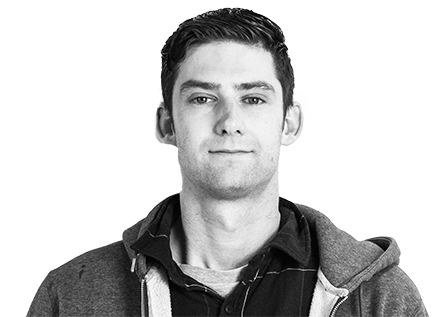
PIERCE LANG

ARYA LOTFI-SARVESTANI

GABRIELA MENDOZA

KHAWLA NAKUA

LIA NARDONE

DANIELLE OLIVIERRE

MARIA RAMAGE

DEMAINE REID-LECKY

ANDREE RHOOMS

NICOLE SALTER

UMAR TAIYAB

MITCH VARLEY
Contact
Sheridan College
